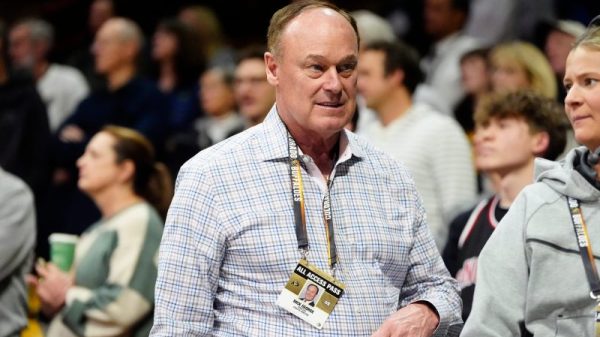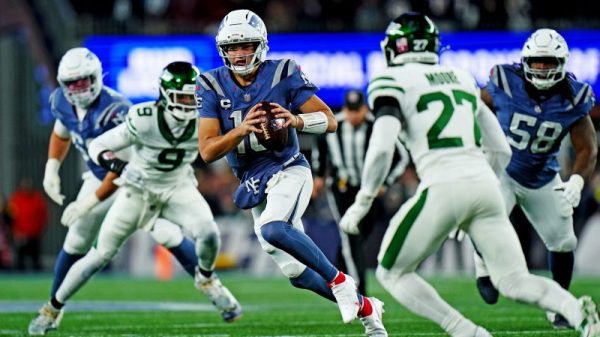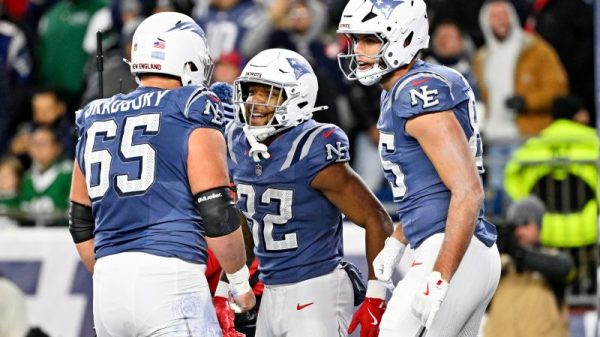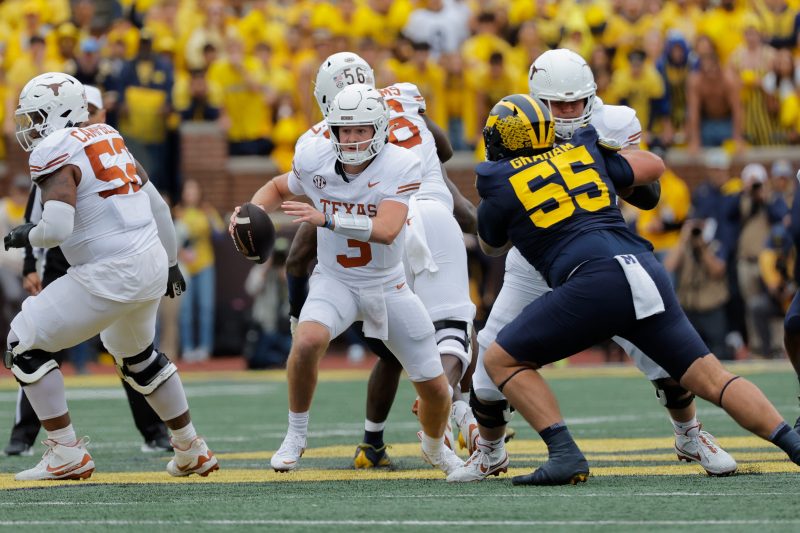The SEC and Big Ten are discussing a potential scheduling agreement that could lead to a significant increase in media rights revenue, further distancing the two super conferences from the rest of college football, four people with knowledge of the discussions told USA TODAY.
The people who spoke on the condition of anonymity because of the sensitivity of the conversations say the two super conferences could face off in as many as 12 to 16 regular-season nonconference games a year – or more – to determine the extent of the increase in media rights revenue.
The potential scheduling agreement is an answer to billions in lost revenue from the House legal case settlement of more than $2 billion to former players, and future revenue sharing with players of at least $20 million to $23 million annually beginning as soon as the 2025 season.
An industry source with knowledge of the process indicated the only way to maximize revenue is with an increased number of high-value nonconference games over a specific period of time – something that could be negotiated and contracted.
SEC, Big Ten aligning for new revenue frontier
The SEC and Big Ten played three nonconference games this season – Southern California vs. LSU, Alabama vs. Wisconsin and Texas vs. Michigan – and all three were among the top 10 in overall viewership in the first month of the season. But three games per season won’t change monetary deals the two conferences have with television partners ABC/ESPN (SEC) and Fox, CBS and NBC (Big Ten).
Double-digit games that can be promoted and sold as standalone events — like the annual Big Ten vs. ACC basketball challenge — and draw unique advertising dollars are appealing to broadcast partners.
There are still multiple hurdles to clear – including schedule structure, format of how games are paired and revenue distribution – but officials in both conferences see the potential agreement as an answer to the rapidly-changing financial landscape of college football.
Another possible revenue stream is private equity, but SEC commissioner Greg Sankey and Big Ten Commissioner Tony Petitti said last Thursday that isn’t an option.
The two most powerful men in college sports met in Nashville last week, along with athletics directors and other conference administrators, to underscore a process that has picked up steam since the SEC and Big Ten announced in February they would work together as an ‘advisory group’ to help steer college sports through a tumultuous time of financial and operational uncertainty.
How much new revenue could a deal bring?
The House settlement and the projected future shared revenue with players mandates the desperate search for new – what one person called clean revenue.
How much new revenue?
Enough to not miss out on a new revenue frontier, another industry person said.
But what looks like a simple tradeoff is not without unique circumstances: How many conferences games will the SEC and Big Ten play (eight or nine), and how many of the combined 34 teams will be available for the proposed games?
As important: How will the revenue be divided, and if the conferences pool non-conference games, are there advantages down the road to pooling media rights revenue and gaining even more financial stability?
Could the Big Ten and SEC at some point combine forces for a major rights deal across all multiple networks instead of cutting separate deals for each conference?
A Big Ten athletics director told USA TODAY Sports everything is on the table.
How Big Ten, SEC could change football schedules
The process begins and ends with structure. The Big Ten currently plays nine conference games, the SEC eight.
If the SEC moves to nine, a corresponding move could be as many as 12 new nonconference games between the leagues. If both move to eight conference games, there’s a possibility for as many as 20 or more.
Four schools in the SEC (Florida, Georgia, South Carolina, Kentucky) have games against instate rivals from the ACC they want to protect, and Southern California (Notre Dame), Oregon (Oregon State) and Washington (Washington State) also have protected nonconference rivalries.
Those seven schools don’t want a future nine-game conference schedule that includes a nonconference game against current rivals, and another game from the new scheduling agreement. Such a move would leave each with only one flexible, money-making home game on the 12-game schedule.
Four of those schools (Florida, Georgia, USC, Oregon) are major TV draws and critical to any offer of nonconference games to media rights partners.
“We had a pretty big discussion about the path to play each other more,” Petitti said after Thursday’s meeting. “See if you can figure out how you can actually do it. Decide what games you want, how many, but that’s a broad discussion.”
It’s also being done within an environment that clearly favors the two super conferences. Both have pulled away financially from the rest of the FBS conferences and would move further away with a nonconference scheduling agreement.
But the last thing the Big Ten and SEC want is the optics of collusion. It’s no coincidence that both brought legal teams to last week’s meetings to steer clear of those potential problems.
‘Is there a way for us to be intentional about our scheduling?’ said Sankey, who was in Ann Arbor last month when Texas played at Michigan, and the moment was not lost. ‘Just an incredible experience. You stand on the sideline prior to kickoff thinking, ‘What if we can do this more with our nonconference games?”



























